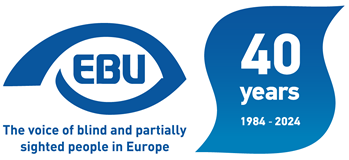Education systems
Equal access to national education, vocational training and lifelong learning systems
Educational settings - mainstream education
Education settings - special education
Collaboration between both systems
Teaching of compensatory skills made necessary by vision loss
Provision of accessible text books and other educational material
Provision of assistive technology
1. Equal access to:
1.1. National education system
The National Core Curriculum specifies the principles of curricular requirements of school-based education provided for pupils with special educational needs. The local educational programmes of kindergartens include specific developmental activities for reducing the disadvantages of children with special educational needs, while the local curricula of schools include development programmes suited to the type and extent of disability.
1.2. National vocational training and lifelong learning systems
The local curriculum and the vocational programme may allow more than one academic year for the fulfillment of the requirements of a grade. Vocational schools may also operate as special vocational schools or skill developmental special vocational schools for the purposes of the teaching and education of pupils with special educational needs.
2. Educational settings
2.1. Mainstream education (please specify what support measures if any)
Education for children/pupils with special educational needs may take place in therapeutic educational institutions, conductive education institutions as well as kindergarten groups or school classes with differentiated curriculum or inclusively, in the same kindergarten group and school class as their non-SEN peers. In the 2008/09 school year 5,000 children with special educational needs were provided kindergarten education (71 % of them in inclusive settings). With regard to the entire public education, about 55 % of SEN children/pupils were educated inclusively, while 45 % of them in special classes or groups.
2.1.1. Primary
2.1.2. Secondary
2.1.3. University
2.1.4. Vocational training and lifelong learning
Only the 'gimnázium' were eligible schools for a long time. However, preparing these pupils for some computerised jobs is beginning to become general practice. The supporting measures described under public education also apply to vocational training with the difference that during the practical part of the vocational course exemption from evaluation, and qualification may not be granted.
2.2. Special education
Pupils with physical or sensory impairment have institutions only in larger geographical units such as regions, and e.g. blind or visually impaired pupils or those with locomotors hindrances have no more than 2-3 institutions in the country.
2.2.1. Primary
2.2.2. Secondary
Blind pupils may acquire the basic knowledge and techniques in a special institution 'általános iskola' that enables talented pupils to continue their studies in upper secondary education on an integrated basis.
2.2.3. University
2.2.4. Vocational training and lifelong learning
2.3. Collaboration between both systems
2.3.1. Primary
2.3.2. Secondary
2.3.3. University
2.3.4. Vocational training and lifelong learning
Special 'szakiskola' may be created for young persons who cannot advance at the same pace as the others due to their disability. These schools may prepare pupils for the trades listed in the National List of Qualifications, and for passing a vocational examination (szakmai vizsga). As regards young persons whose health status prevents them from passing the 'szakmai vizsga', they may still acquire skills and knowledge during two vocational training years to start their adult lives or go into employment.
3. Teaching of compensatory skills made necessary by vision loss
3.1. Subjects (Braille, computer, daily-living skills, mobility, etc.)
3.2. Training and certificates for visually impaired teachers (Braille, computer, daily-living skills, mobility, etc.)
3.3. Training and certificates for visually impaired students (Braille, computer, daily-living skills, mobility, etc.)
In case of students with visual impairment the possibility of oral examinations instead of written examinations must be ensured. In cases of written exams the use of special equipment should be guaranteed. Students with this special educational needs may be exempt from some of the physical/practical requirements or these requirements may be supplemented by non physical/practical requirements for them.
4. Provision of accessible text books and other educational material
The Education System must provide study material in audio cassette, CD, or in books written in Braille method, they should ensure the appropriate lighting, and personal assistance.
4.2. Adaptation and transcription of the documents
5. Provision of assistive technology
5.1. Primary
5.2. Secondary
5.3. University
5.4. Vocational training and lifelong learning
Adapting vocational training programmes for certain areas of disability is the responsibility of the National institution of vocational education, and that is the place where special instruments/equipment is elaborated.
(Sources - http://eacea.ec.europa.eu/education/eurydice/eurybase_en.php#hungary )

